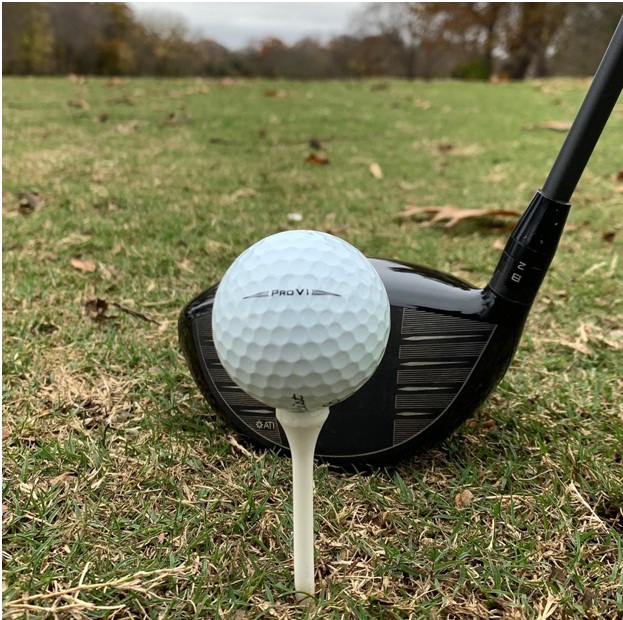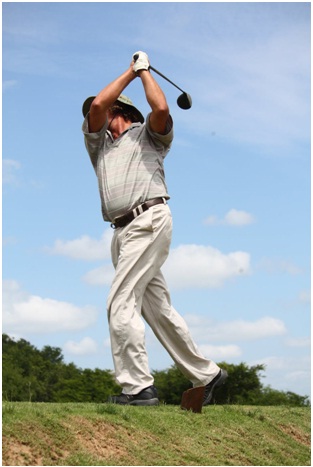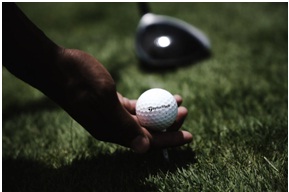Assessing the Best Driver Shafts by Feature
Posted by Dallas Golf on 07 Nov 2020

As we have noted at Dallas Golf Company before, anyone who is looking for a quick answer to the question of “what is the best driver shaft” is doing a disservice to the sport and to the pursuit of perfection. There isn’t one superlative driver shaft, just like there is more than one way to evaluate the skills of a player.
Instead, there are many different types of golf shafts, which will vary in fitness to an application not only by the needs of the golf club head to which they will be fitted but to the needs of the player who will use them. In other words, no two golf shafts are created equal, and no two of them will suit the same player equally.
So we’ve compiled a list of features, features that all golf shafts possess, and will affect their performance, and in each category, we’re going to talk a little bit about how these features can help or hurt a player, based on what the shaft offers.
Shaft Flex
All things considered, if we had to point to one single indicator of the performance of a golf shaft, we might have to point to shaft flex. That’s not to say that all of the other features in this article aren’t important, only that the importance of shaft flex cannot be understated.
Shaft flex is how stiff a given golf shaft is, and is measured somewhat subjectively according to the metrics of each individual shaft manufacturer. Most shafts are graded accordingly to these metrics and will carry a label of extra stiff (XS), stiff (S), and regular (R), along with a few additional ratings, such as ladies (L), senior (which is also denoted by (S), and amateur (A). To keep things from getting too convoluted, the last three of these ratings are all typically less stiff than the former three.
Shaft flex is one of the most important features of a golf shaft because the flex will impact the distance you can hit the ball, along with the accuracy of your placement and the loft of the ball flight (although kick point will impact this as well.) Matching a shaft flex to your abilities, as well as to the club head, will go a long way towards improving your abilities and allowing you to hone your skills.
All other things being equal, a shaft with a stiffer flex is going to suit the needs of a player with a higher swing speed. This is valuable for players who are capable of attaining high swing speeds because it will improve the accuracy and distance of their swings. A stiff flex can sometimes be paired with a steel shaft or a stiff graphite shaft in order to get the most out of a player’s swing in terms of distance and accuracy. By contrast, a more flexible shaft might be frustrating for a player with a higher swing speed to play with.
That doesn’t mean, however, that stiffer shafts are “better” than more flexible shafts, and there are situations in which a more flexible shaft is going to suit some players much better. The thing about more flexible shafts is that while they might be too frustrating for players with higher swing speeds - they can feel “whippy” - they are much more suitable for players with slower swing speeds.
Golfers with slower swing speeds may have a hard time getting the distance out of their swings, as compared to players with higher swing speeds. A more flexible shaft, like an amateur shaft, will accommodate a slower swing speed and enable those players to reach out farther and be more accurate. In essence, the more flexible shaft helps with energy transfer and will assist players with slower swing speeds and those are learning. Flexible shafts are much more forgiving, which newer players will appreciate as well.
Kick Point

The kick point is also variously called the flex point and the bend point, and it refers to the part of the golf shaft that bends the most markedly when pressure is applied to the shaft. In other words, it is the area of the shaft that bends the most during a swing.
There are a few reasons why this matters, but one that stands out. The most significant reason to take notice of the kick point and match the shaft to your stroke is because the kick point will affect the ball loft. Players who are looking for better placement with their golf swing, or for example, a lower trajectory that will enable the player to hit the ball farther, would do well to look after the kick point.
Additionally, some golf shafts have a kick point that will respond slightly differently to differing swing speeds, which makes it worthwhile to spend an adequate amount of time practicing and getting familiar with your equipment.
The reason that kick point matters so pointedly is because it is going to affect the launch angle of the golf ball. A golf shaft with a high kick point will contact a gold ball at a lower angle, which will in turn give you a lower trajectory, which can equate to a greater distance, holding all other things the same.
Like stiffer shafts, shafts with a high kick point are not as forgiving as their low kick point counterparts and are generally suitable for players that have higher swing speeds. That makes shafts with a lower kick point, often in conjunction with more flexible shafts, a more amenable option for players with slower swing speeds.
The reason for this is the converse of the reasoning offered above. A low kick point shaft will enable the club head to contact the golf ball at a steeper angle, which will add loft to the ball flight. That means, all other things being equal, that shafts with a lower kick point will be higher launching shafts. This is useful for players who struggle with the unforgiving nature of a stiffer shaft with a high kick point.
Torque Rating
Shaft and kick point both refer to the way a shaft will bend along the same axis, but torque, which is related to both of these features and will also affect the performance of a gold swing, refers to the way a golf shaft will rotate around a central axis that runs through the shaft.
In other words, torque is twist, and it refers to the degree to which a shaft will twist around the center when force is applied. If you’re wondering when a shaft would be twisted in such a manner, just think of the forces that are exerted on it during the path of a swing.
What torque is can be explained easily enough, but you’re probably here to get a handle on how it affects a player’s swing. Torque, unlike shaft and kick point, can be a little harder to classify in its effects, but generally speaking, here are a few points that you might notice.
For one thing, if a golfer with a fast swing uses a shaft with a torque rating that is too high, he or she might notice that their golf ball trajectory trends toward the outside of the swing. This is due to the fact that the clubhead twists away from the ball before contact, allowing the ball to “roll” outward along the club face during contact. This makes a shaft with a lower torque rating more fitting for players with a high swing speed.
Some might consider that higher torque ratings are more forgiving, which can be a benefit to those with slower swing speeds, but this is not always the case. It’s more important to practice with a number of shafts and to be fitted so that you can settle on what works for you.
Material
In addition to shaft flex, kick point, and torque, the material from which a golf shaft is made is also going to affect the performance and fitness of the shaft. It will also affect the features already explored here.
For the most part, shafts today are made from graphite, with a minority of steel shafts still being produced. At the same time, there are some hybrid shafts on the market as well.
For a long time, most golf shafts were made from steel, which is heavier and much tougher than graphite. Steel shafts are also typically very stiff, with a high kick point (and not much of one) as well as very little torque. This allows steel shafts like True Temper shafts to remain the preferred choice of some golfers today.
However, steel shafts do not exhibit the same degree of flexibility as graphite shafts, so despite the higher cost and more fragile nature of graphite, they are extremely popular. Graphite shafts can be made very stiff for very flexible, with a wide range of kick points and torque ratings, in order to meet the diverse needs of different golfers playing the game today. With the advent of technology that made the production of graphite more practical, players can now more easily find a shaft that suits them well, rather than simply learning to use what is otherwise available.
Weight
The weight of a golf shaft is also going to impact a player’s performance. Unsurprisingly, steel shafts weigh more than equivalently sized graphite shafts, though the weight of a graphite shaft can be tinkered with by the manufacturer.
Weight is not the most significant impact of performance, but there are some sources that will claim that the heavier a shaft is, the less the shaft will twist or bend, imparting less spin to the ball. All other things being equal, the less spin there is, the straighter and truer the ball will fly, which will improve the accuracy of a swing.
Then again, a player would be able to swing lighter shafts faster, which could improve the distance of the ball flight. There may be a slight tradeoff between distance and accuracy, and it’s something to be aware of while you are ascertaining a shaft’s personal value.
Length
Shaft length can be easily and objectively measured, and it is one of the most important features of a golf shaft. A shaft that would otherwise match your abilities perfectly will be entirely useless if it is not sized to you accordingly.
To know what size golf shaft you should be using, you will need to get fitted (see below) but there is a small range of sizes that will actually be acceptable to any given player. All other things being equal, a longer shaft will be able to give you a little more speed through the swing, but defending on the other qualities of the shaft it might come at the cost of accuracy.
In a lot of ways, a lot of the attributes of a golf shaft come down to a balance between swing speed (and thus, distance) and accuracy, so there is definitely a tradeoff to be investigated. The real way to determine the best driver shafts to use is to get fitted with the help of a professional.
Get Fitted

The link above to our golf fitting services will give you some insight into what we can offer you in our retail store should you come in for a golf shaft fitting. We’ll interview you, observe your swing, and take your goals into account before we suggest any shaft based on those inputs.
If you can’t visit us in-store, you can always take advantage of our online club fitting services to help you identify the best driver shafts for you. Besides, you can always contact a member of our team at 800-955-9550 for more information if you need help during the process.
Otherwise, shop through our collection of shafts, golf bags, and accessories while you’re here so you’re better prepared before your next day on the course. You’ll find tons of deals on new and used equipment, and you can always reach us at the number above if you need additional assistance.
